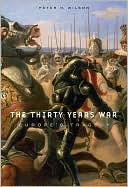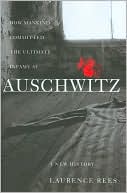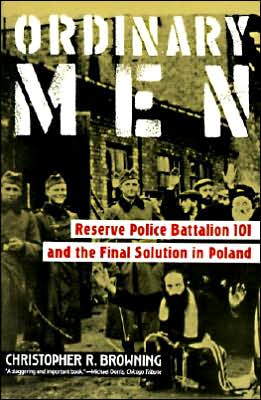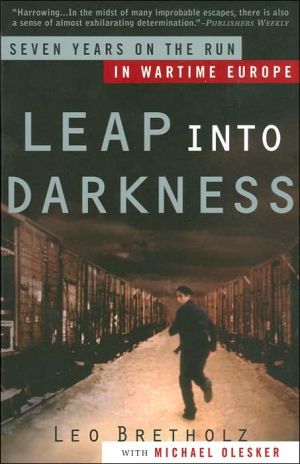The Thirty Years War: Europe's Tragedy
Search in google:
A deadly continental struggle, the Thirty Years War devastated seventeenth-century Europe, killing nearly a quarter of all Germans and laying waste to towns and countryside alike. Peter Wilson offers the first new history in a generation of a horrifying conflict that transformed the map of the modern world.When defiant Bohemians tossed the Habsburg emperor’s envoys from the castle windows in Prague in 1618, the Holy Roman Empire struck back with a vengeance. Bohemia was ravaged by mercenary troops in the first battle of a conflagration that would engulf Europe from Spain to Sweden. The sweeping narrative encompasses dramatic events and unforgettable individuals—the sack of Magdeburg; the Dutch revolt; the Swedish militant king Gustavus Adolphus; the imperial generals, opportunistic Wallenstein and pious Tilly; and crafty diplomat Cardinal Richelieu. In a major reassessment, Wilson argues that religion was not the catalyst, but one element in a lethal stew of political, social, and dynastic forces that fed the conflict. By war’s end a recognizably modern Europe had been created, but at what price? The Thirty Years War condemned the Germans to two centuries of internal division and international impotence and became a benchmark of brutality for centuries. As late as the 1960s, Germans placed it ahead of both world wars and the Black Death as their country’s greatest disaster.An understanding of the Thirty Years War is essential to comprehending modern European history. Wilson’s masterful book will stand as the definitive account of this epic conflict.For a map of Central Europe in 1618, referenced on page XVI, please visit the book feature. Publishers Weekly From the Defenestration of Prague in 1618 until the Peace of Westphalia in 1648, brutal warfare swept across Europe. In his monumental study of the causes and the consequences of the Thirty Years War, Wilson, a professor of history at the University of Hull in England, challenges traditional interpretations of the war as primarily religious. He explores instead the political, social, economic as well as religious forces behind the conflict—for example, an Ottoman incursion left the Hapsburg Empire considerably weakened and overshadowed by the Spanish empire. Wilson then provides a meticulous account of the war, introducing some of its great personalities: the crafty General Wallenstein; the Swedish king Gustavus Adolphus, who preserved his state through canny political treaties and military operations; and Hapsburg archdukes Rudolf and Matthias, the brothers whose quarrels marked the future of Bohemia, Austria and Hungary. By the war's end, ravaged as all the states were by violence, disease and destruction, Europe was more stable, but with sovereign states rather than empires, and with a secular order. Wilson's scholarship and attention to both the details and the larger picture make his the definitive history of the Thirty Years War. 16 pages of color photos; 22 maps. (Oct.)
List of IllustrationsList of Maps and Battle PlansList of TablesNote on FormThe Habsburg Family Tree 1500-1665Note on CurrenciesPrefacePart one: BeginningsIntroductionThree Men and a WindowInterpretationsThe ArgumentTrouble in the Heart of Christendom The EmpireConfessionalizationReligion and Imperial LawCasa d'Austria Lands and DynastyEstates and ConfessionThe Catholic RevivalThe Turkish War and its Consequences The Turkish MenaceThe Ways of WarThe Long Turkish WarThe Brothers' QuarrelPax Hispanica The Spanish MonarchyThe Dutch Revolt 1568-1609The Spanish RoadSpanish Peace-making 161Dominium Maris Baltici DenmarkThe Divided House of VasaPoland-LithuaniaFrom Rudolf to Matthias 1582-1612 Religion and the German PrincesConfession and Imperial Politics to 1608Union and Liga 1608-9The Ju¨ lich-Cleves Crisis 1609-10On the Brink? Emperor MatthiasThe Uskok War and the Habsburg Succession 1615-17 255Palatine BrinkmanshipPart Two: ConflictThe Bohemian Revolt 1618-20 For Liberty and PrivilegeA King for a CrownFerdinand Gathers his ForcesWhite MountainAccounting for FailureFerdinand Triumphant 1621-4 The Palatine CauseProtestant PaladinsThe Catholic Ascendancy 1621-9Olivares and Richelieu OlivaresRichelieuThe ValtellinaDenmark's War against the Emperor 1625-9 Trouble in Lower SaxonyWallensteinDenmark's Defeat 1626-9The Threat of European War 1628-30 The BalticThe NetherlandsMantua and La RochelleThe Edict of RestitutionThe Regensburg Electoral Congress 1630The Lion of the North 1630-2 Swedish InterventionBetween the Lion and the EagleThe Swedish EmpireCalls for AssistanceZenithWithout Gustavus 1633-4 The Heilbronn LeagueTension along the RhineSpain IntervenesWallenstein: the Final ActThe Two FerdinandsFor the Liberty of Germany 1635-6 Richelieu Resolves on WarThe War in the West 1635-6The Peace of Prague 1635Appeals to PatriotismRenewed Efforts for PeaceHabsburg High Tide 1637-40 StalemateResolution on the RhinePeace for North Germany?In the Balance 1641-3 The Franco-Swedish Alliance 1641The War in the Empire 1642-3Spain's Growing Crisis 1635-43From Breda to Rocroi 1637-43Pressure to Negotiate 1644-5 The Westphalian CongressFrance in Germany 1644The Baltic Becomes Swedish 1643-51645: Annus horribilis et mirabilisWar or Peace 1646-8 A Crisis of Confidence 1646Towards ConsensusSpain's Peace with the DutchThe Final Round 1648Part Three: AftermathThe Westphalian Settlement The International DimensionA Christian PeaceDemobilizationThe Imperial RecoveryThe Human and Material Cost An All-destructive Fury?The Demographic ImpactThe Economic ImpactThe Crisis of the Territorial StateCultural ImpactExperiencing War The Nature of ExperienceMilitary-Civil RelationsPerceptionsCommemorationAbbreviationsNotesIndex







